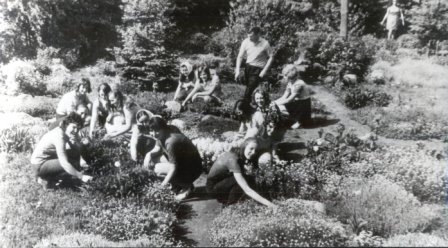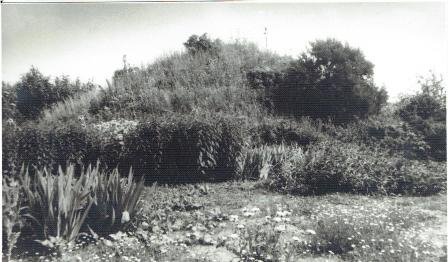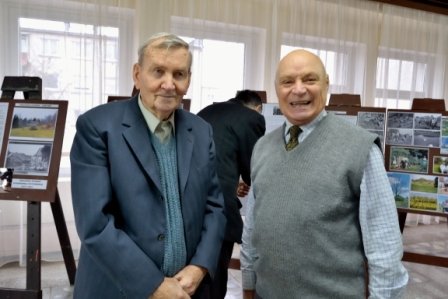Every Šiauliai citizen wants their city to be known not only for its beautiful and captivating landscape, but also as an oasis of science, culture and spiritual values. According to Tumas Vaižgantas, one needs to search for “small diamonds” – sources of bright ideas in order to realise such noble ambitions. The Botanical Garden of Šiauliai Academy is one of these small diamonds. Botanical garden is a symbol of high culture and prestige in every city. There are still a lot of people who are not familiar with the origin of our garden, hence here is a bit of history concerning the Botanical Garden.
Šiauliai Academy of Vilnius University Botanical Garden (former biological and agro biological station) was started in 1958. The Executive Committee of Šiauliai city granted 2.5 ha of fertile ground, located near the railroad (an empty, nameless area at the time), for the establishment of biological station. In 1961 the station began recruiting staff and Stasys Gliaudys was appointed as a manager. In 1962 the whole area was landscaped with fruit-trees as well as 2–3 rows of various trees and shrubs, a small alpine flower garden was built and later the division of plant collection was formed. The plants were donated by Vilnius Botanical Garden, The Agricultural Research Institute of Dotnuva and Vilnius greenhouses. In 1997 the university department activity programme in accordance with present botanical garden requirements was prepared by prof. PhD Kęstutis Kazimieras Vilkonis. In September 1st, 1997, at the base of Šiauliai Pedagogical Institute agrobiology station, the Šiauliai University Botanical Garden was founded under the guidance of doc. K. K. Vilkonis.

Currently, the total area of Botanical Garden is 6.54 ha. The collection contains approx. 3800 plant taxa and species. The most prevalent plant families are aster (Asteraceae) and heather (Ericaceae). Plant collections are grown in the divisions of plant systematics and geography, dendrology, heather family, phenology, alpine plants, floriculture, spice and medicinal plants. The main goal of Botanical Garden is to preserve and increase the plant collection and organise educational activities. The garden constantly expands its seed collection by cooperating with more than 250 botanical gardens worldwide and participating in seed exchange programme. By grooming the garden and creating informational plant exhibitions Šiauliai Botanical Garden expanded its educational, recreational and academic activities. Since 2003 Botanical Garden has become a member of Botanic Gardens Conservation International, Planta Europa Network, Botanical Gardens of the Baltic Sea Region, Baltic States botanical gardens and the Association of Botanical Gardens of Lithuanian Universities. In 2005 garden joined the network of International Phenological Gardens of Europe (IPG). The garden has its friends club (Šiauliai University Botanical Garden Friends club).

The scientific research carried out in the botanical garden is related to the introduction and acclimatisation of ornamental plants, plant biodiversity conservation ex-situ and in-situ as well as phenological observations. The garden also serves as a training and research base for university students. It is also a perfect place for children to play and explore the outdoors.
Although Botanical Garden is currently the youngest and smallest by area garden in Lithuania, we are continually building and creating new plant collections, developing scientific and research activities and focusing on making our Botanical Garden a place of beauty and comfort for everyone.
- Since 2003 Botanical Garden is a member of Botanic Gardens Conservation International, Planta Europa Network, Association of Botanic Gardens in the Baltic Sea Region, Botanical Gardens of the Baltic Countries and the Association of Lithuanian University Botanic Gardens (LUBSA).
- Since 2005 the Botanic Garden is a member of International Network of Phenological Gardens of Europe (IPG).
- Now there is a Club of Botanic Garden Friends at the Botanical Garden. The Garden exchanges seeds with more than 250 botanical gardens of the world.

Fields of research:
- Research on plant biodiversity ex situ and in situ.
- Research on introduction and acclimatization of ornamental plants.
- Phenological observations.
Other activities:
- ex situ conservation.
- educational activities at the Botanical Garden.
- organization of events at the Botanical Garden.
